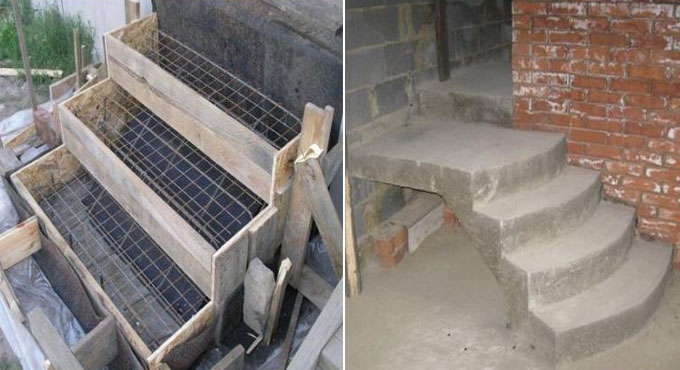
Formwork for Stairs of Concrete in Construction
Concrete stairs are a common sight in both commercial and residential buildings. They are durable, strong, and can be designed to fit any style. However, concrete stairs are not easy to build. The formwork, or mold, that is used to create the stairs must be carefully designed and constructed in order to ensure that the stairs are level, plumb, and structurally.
Constructing concrete stairs requires careful planning and attention to detail, particularly when it comes to formwork. Formwork plays a crucial role in creating the desired shape and structure of the stairs.
What is the Importance of Formwork Design?
Formwork design is an important part of building concrete stairs. It entails assessing the design, proportions, and structural needs of the steps, as well as constructing an appropriate formwork system to accomplish the intended outcomes. The number of steps, the height and breadth of each step, the degree of slope, and any architectural aspects necessary should all be considered in the design.
What are the steps of construction formwork?
The steps involved in constructing formwork for concrete stairs are as follows:
- Measure and mark the location of the stairs. The first step is to measure and mark the location of the stairs. This will help to ensure that the formwork is constructed in the correct location.
- Construct the riser forms. The riser forms are the vertical elements of the formwork. They are typically made of wood or steel. The riser forms should be spaced evenly and should be the same height as the risers of the stairs.
- Construct the tread forms. The tread forms are the horizontal elements of the formwork. They are typically made of wood or plastic. The tread forms should be the same width as the treads of the stairs.
- Attach the riser and tread forms. The riser and tread forms should be attached together using nails, screws, or bolts. During the concrete pour, the formwork should be strong enough to support the weight of the concrete.
- Install bracing. Bracing is used to prevent the formwork from collapsing. Bracing can be made of wood, steel, or plastic. The bracing should be installed at regular intervals throughout the formwork.
- Wax or oil the formwork. Wax or oil the formwork to prevent the concrete from sticking. This will make it easier to remove the formwork after the concrete has been set.
What are the Factors to consider when Designing Formwork?
There are a number of factors that must be considered when designing formwork for concrete stairs. These factors include:
- The size and shape of the stairs.
- The weight of the concrete.
- The location of the stairs.
- The weather conditions.
The size and shape of the stairs will determine the amount of material that is needed for the formwork. The weight of the concrete will determine the strength of the formwork. The location of the stairs will determine the type of material that is used for the formwork. The weather conditions will determine the need for additional bracing or insulation.
What are the components for the formwork of the stair construction?
The formwork system for stair construction typically consists of the following components:
- Vertical Risers: These are the vertical faces of the stairs that connect one step to another. The formwork for vertical risers creates the shape of the steps and provides support during concrete pouring.
- Horizontal Treads: The treads are the horizontal surfaces where people step when climbing or descending the stairs. The formwork for treads is designed to support the weight of the concrete and any additional loads during construction.
- Side Forms: Side forms are used to define the lateral boundaries of the stairs and maintain the desired width and alignment of the staircase.
- Landing Formwork: For staircases with intermediate landings, separate formwork is used to create these horizontal platforms.
- Reinforcement Support: The formwork should accommodate and secure the reinforcement bars (rebars) in their designated positions as specified in the stair design.
- Anchoring and Bracing: The formwork system should be securely anchored to the ground or adjacent structures to prevent any movement during concrete pouring. Bracing and supports are used to ensure stability and prevent formwork collapse.
To ensure the quality and integrity of pile foundations, various testing methods are employed:
Formwork materials can vary and may include timber, plywood, steel, or aluminium. The choice of material depends on factors such as the complexity of the stair design, project budget, ease of installation, and desired level of reusability. Proper formwork design and installation are crucial for ensuring that the concrete staircase meets architectural specifications, structural requirements, and safety standards.
Conclusion
Concrete stair formwork necessitates thorough design, attention to detail, and respect for safety rules. Proper formwork design, material selection, accurate installation procedures, and stringent safety precautions all contribute to the successful construction of high-quality concrete stairs.
To get more details, watch the following video tutorial.
Video Source: Aperture Of Construction
Construction experts may design visually beautiful and structurally strong staircases that leave a lasting impact by knowing and executing the art of stair formwork.


